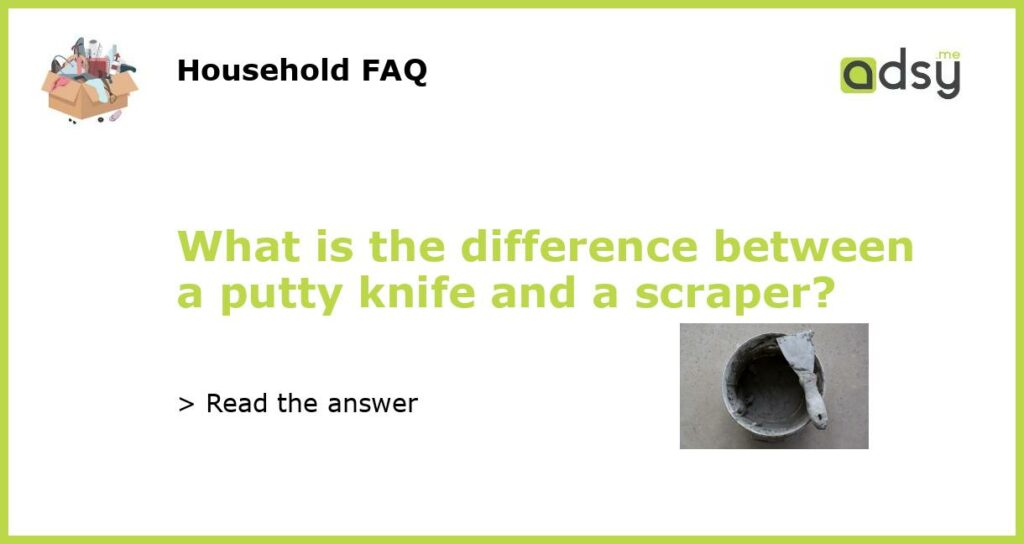What is a Putty Knife?
A putty knife is a tool with a flat and flexible blade that is usually made of steel or plastic. This type of knife is mostly used for spreading putty or other similar substances on a surface. The blade is relatively thin, and it can be either straight or angled. The handle is typically made of wood or plastic, and it is designed to provide a comfortable and secure grip.
What is a Scraper?
A scraper is a tool that is used for removing paint, varnish, rust, and other unwanted materials from a surface. The blade of a scraper is usually thicker and more rigid than that of a putty knife. It can be straight or curved, and it is often made of steel. The handle is usually made of wood or plastic, and it is designed to provide a comfortable grip.
The Main Differences Between the Two
The main difference between a putty knife and a scraper is the thickness and rigidity of the blade. A putty knife has a thin and flexible blade, while a scraper has a thicker and more rigid blade. Moreover, putty knives are typically used for spreading putty or other similar substances on a surface, while scrapers are used for removing unwanted materials from a surface.
When to Use a Putty Knife?
A putty knife is an excellent tool for spreading putty, caulk, and other similar substances on a surface. It is also useful for smoothing out surfaces that have been plastered or repaired. Moreover, a putty knife is an ideal tool for applying adhesives and paints to small areas, such as corners or edges.
When to Use a Scraper?
A scraper is a valuable tool for removing paint, varnish, rust, and other unwanted materials from a surface. It is particularly useful for areas that cannot be easily sanded, such as corners or edges. A scraper can also be used to strip wallpaper or remove old glue from a surface. However, care should be taken when using a scraper, as the blade can easily damage the surface if used incorrectly.






